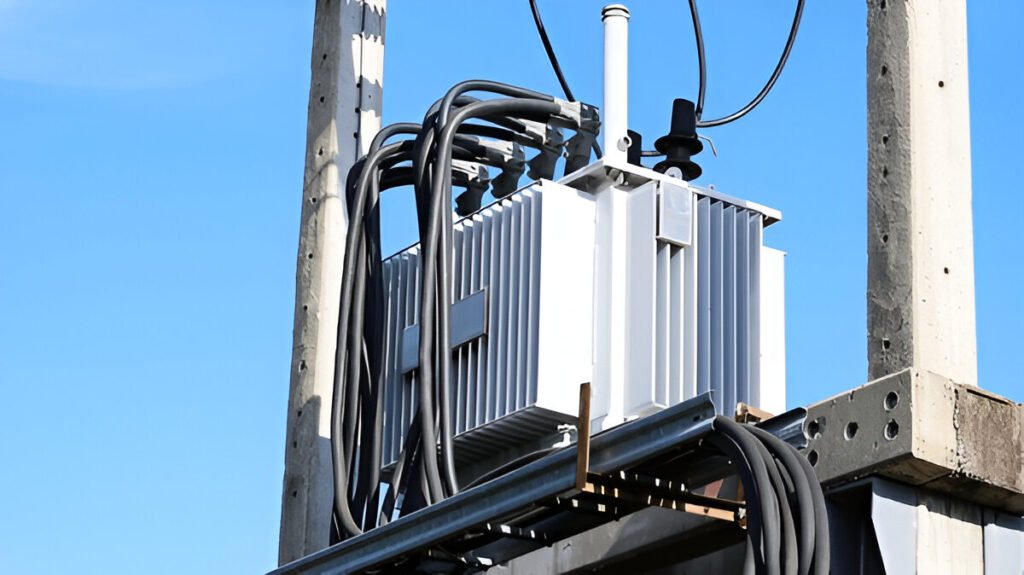What is a Voltage Transformer
A voltage transformer is a device that changes the voltage level of an alternating current (AC) electrical power source.
Read More
Excessive neutral current is a significant issue in electrical systems that can lead to serious consequences if left unaddressed. This phenomenon occurs when the current flowing through the neutral conductor exceeds the expected levels, often due to various factors such as unbalanced loads, harmonic distortion, improper wiring, grounding issues, overloaded circuits, faulty equipment, and stray currents.
The consequences of excessive neutral current can be severe, ranging from overheating of conductors and voltage fluctuations to an increased risk of electrical fires, equipment damage, and nuisance tripping of circuit breakers. In this blog post, we will delve into the causes of excessive neutral current and explore the potential consequences..

One of the most common causes of excessive neutral current is unbalanced loads. In a three-phase electrical system, the currents in each phase should be equal and cancel each other out in the neutral conductor. However, when the loads on each phase are not balanced, the currents do not cancel out completely, resulting in a net current flowing through the neutral conductor.
Unbalanced loads can occur due to various reasons, such as:
Harmonic distortion is another significant contributor to excessive neutral current. Non-linear loads, such as electronic devices, variable frequency drives, and LED lighting, draw current in a non-sinusoidal waveform. This distortion creates harmonic currents that are integer multiples of the fundamental frequency (50 Hz or 60 Hz).
The triplen harmonics (3rd, 9th, 15th, etc.) are of particular concern because they add up in the neutral conductor rather than canceling out. This accumulation of triplen harmonics can lead to a substantial increase in neutral current, even when the loads on each phase are balanced.
To address harmonic distortion, several measures can be taken:
Improper wiring is another potential cause of excessive neutral current. Wiring errors, such as the incorrect connection of loads to the neutral conductor or the use of undersized neutral conductors, can lead to overloading and overheating.
Examples of improper wiring include:
Grounding problems can also contribute to excessive neutral current. In a properly functioning electrical system, the neutral conductor is connected to the ground at the transformer or the main distribution panel. This connection ensures that the neutral conductor remains at a stable, near-zero voltage potential.
However, if there are issues with the grounding system, such as:
These problems can cause the neutral voltage to fluctuate, leading to unintended current flows and overloading of the neutral conductor.
Overloaded circuits can also lead to excessive neutral current. When the total current drawn by the loads on a circuit exceeds its rated capacity, the conductors, including the neutral, can become overloaded and overheat.
Overloading can occur due to:
Faulty equipment can be another source of excessive neutral current. Electrical devices that malfunction or have internal wiring issues can draw excessive current, leading to overloading of the neutral conductor.
Examples of faulty equipment that can cause excessive neutral current include:
\
Stray currents, also known as leakage currents, can contribute to excessive neutral current. These currents can flow through unintended paths, such as conductive building materials, piping, or other metallic structures, due to improper insulation or grounding issues.
Stray currents can be caused by:
Excessive neutral current can lead to various problems in electrical systems, compromising safety, reliability, and efficiency.
One of the most significant consequences of excessive neutral current is the overheating of conductors. When the neutral conductor carries more current than its rated capacity, it can generate heat due to the increased electrical resistance. This heat can cause the insulation on the conductor to deteriorate, increasing the risk of short circuits and electrical fires.
Overheating can also occur in phase conductors if the excessive neutral current is caused by unbalanced loads or harmonic distortion. The increased temperature of the conductors can lead to premature aging and failure of the insulation, compromising the overall integrity of the electrical system.
Excessive neutral current can cause voltage fluctuations in the electrical system. When the neutral conductor is overloaded, the voltage drop across it increases, leading to a difference in voltage potential between the neutral and the ground. This voltage difference can cause the phase-to-neutral voltages to become unbalanced, resulting in voltage fluctuations.
Voltage fluctuations can have several negative effects, such as:
Excessive neutral current significantly increases the risk of electrical fires. As mentioned earlier, overheating of conductors due to excessive current can cause insulation deterioration and short circuits. These short circuits can generate sparks or high temperatures that can ignite nearby combustible materials, leading to an electrical fire.
Additionally, overheated connections, such as those in receptacles, switches, or panel boards, can also pose a fire risk. The increased temperature can cause the connections to loosen or degrade, creating high-resistance points that can generate heat and sparks.
Excessive neutral current can also lead to equipment damage. Voltage fluctuations caused by overloaded neutrals can stress electronic components, leading to premature failure or malfunction. This is particularly true for sensitive equipment, such as computers, communication devices, and control systems.
Overheating of conductors and connections can also damage equipment connected to the affected circuits. The increased temperature can cause insulation breakdown, short circuits, or even melt critical components within the equipment.
Excessive neutral current can lead to nuisance tripping of circuit breakers. Circuit breakers are designed to protect electrical systems from overloads and short circuits by interrupting the current flow when it exceeds a predetermined threshold.
However, when the neutral current is excessive, it can cause the circuit breakers to trip even when the phase currents are within their normal range.